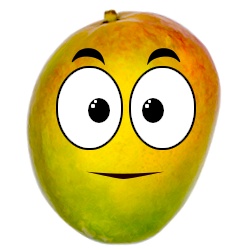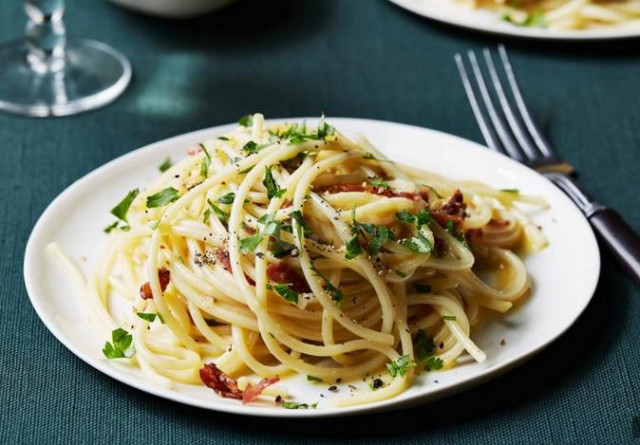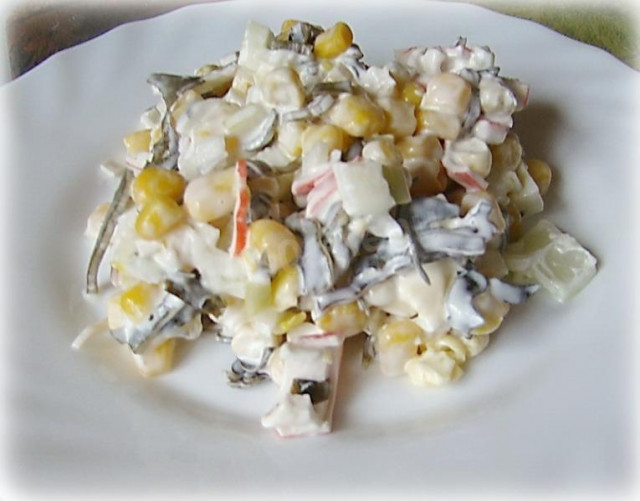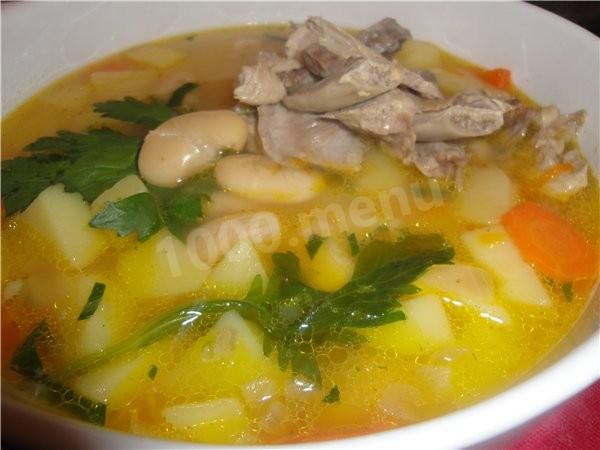Composition / ingredients
Cooking method
The appearance of the recipe "pasta carbonara" is directly related to the ancient Roman state.
The cuisine of Ancient Rome has been changing and improving throughout its existence.
In the 14th century, during the Renaissance, the city of Rome (ital. Roma) acquired not only the status of the capital of the Roman Empire, but also became the gastronomic center of ancient Italy.
Animals, fish, grain, spices, oils and delicacies were brought to Rome from all over the empire.
Despite the fact that pasta carbonara is one of the main symbols of Roman cuisine and one of the most popular pasta recipes in the world, it is a relatively new dish.
The first documented mentions of the recipe "Spaghetti alla Carbonara" are found only in the 1950s. For example, in the book of the Italian poet Mario dell'Arco "Lunga vita di Trilussa" from 1951, as well as in the Roman love stories of Alberto Moravia's from 1954, the dish "spaghetti alla Carbonara" is mentioned.
The variety of products and the exchange of culinary traditions with many cultures of the Mediterranean, helped to develop new and modernize old taste habits and recipes, including recipes with pasta.
By the 19th century, pasta dishes had become the main asset of Roman cuisine and the hallmark of the Italian region of Lazio, of which Rome is the capital.
The most famous Roman pasta dishes are:
-amatriciana (Italian: l'amatriciana or matriciana);
-Alfredo;
-cacho e pepe (ital. cacio e pepe);
-gricha (ital. gricia);
and of course carbonara paste =)
The ingredients of carbonara are similar to the ingredients of dishes such as Gricia and cacio e pepe. Everything is the same in gricha pasta as in carbonara, but without eggs, and there are no eggs and meat in the cacio e pepe recipe.
Despite the fact that pasta carbonara is one of the main symbols of Roman cuisine and one of the most popular pasta recipes in the world, it is a relatively new dish.
The first documented mentions of the recipe "Spaghetti alla Carbonara" are found only in the 1950s. For example, in the book of the Italian poet Mario dell'Arco "Lunga vita di Trilussa" from 1951, as well as in the Roman love stories of Alberto Moravia's from 1954, the dish "spaghetti alla Carbonara" is mentioned.
Caloric content of the products possible in the composition of the dish
- Boiled bacon - 447 kcal/100g
- Water - 0 kcal/100g
- Egg yolks - 352 kcal/100g
- Parmesan cheese 45% fat content - 389 kcal/100g
- Pepper - 26 kcal/100g
- Spaghetti - 338 kcal/100g







